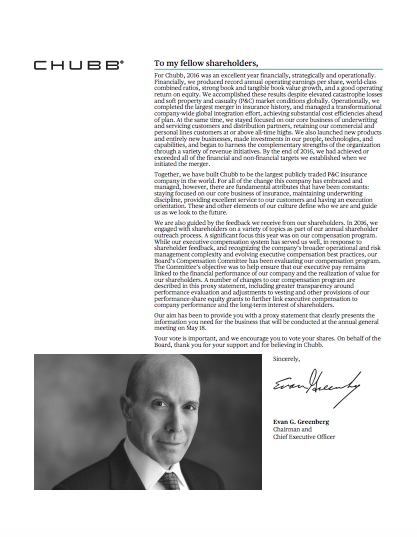As institutional investors ramp up their disclosure requests, proxy statements are evolving in interesting ways. What used to be a perfunctory compliance update is increasingly becoming a powerful opportunity for storytelling, a strategic defense against activists, and even a window into the company's culture. On a recent episode of Inside America's Boardrooms, Ron Schneider (Director of Corporate Governance Services for Donnelley Financial Solutions) describes the landscape:
[blockquote source="Ron Schneider, Donnelley Financial Solutions" cite="https://boardroomresources.com/episode/investors-ramp-disclosure-requests-boards-focus/"]I think we're entering the golden age of proxy disclosure in terms of combining content with design'and many companies are working proactively to get ahead of investor concerns. If we have a strong, independent board in this environment of activism, [then we're] telling that story effectively.[/blockquote]
Each year, Donnelley Financial Solutions publishes a comprehensive resource called the Guide to Effective Proxies, which organizes trends and best-in-class examples from the latest season of proxy statements. In our discussion below, we've pulled several examples from the guide, which is free to download.
How is your board consistently evaluating strategies for value creation, refreshment, incentive pay, etc.? What was the thought process behind key decisions the board has made? In a recent article in Equilar's C-Suite Magazine, Vanguard's Glenn Booraem explains what type of disclosure the institutional investor expects around board composition and strategy alignment:
[blockquote source="Glenn Booraem, Principal & Investment Stewardship Officer at Vanguard" cite="http://csuite.equilar.com/issue_23_spring_2017/index.html"#the_1_investor_issue_in_2017"]We want insight into the process the board utilizes to evaluate the qualifications and performance of directors (both individually and as a team) in the context of the company's strategic needs. We want to understand the alignment between directors' skills, background and experience, and the board's requirements...[/blockquote]
In addition to board evaluation and succession planning, investors are looking for a glimpse into the board's process for assessing incentive pay and overseeing emerging risks like cybersecurity.
'We're seeing companies go beyond the text to add visual elements,' said Schneider. 'A timeline, a flowchart, a process flow...This is what we do in Q1, Q2...or Step 1, Step 2, Step 3, Final Output.'
In the first example below, one company provides a detailed timeline of the board's incentive determination process. The second example outlines a board's evaluation process and the resulting actions. [caption id="attachment_6822" align="aligncenter" width="898"]![Affiliated Managers Group 2017 proxy statement]() Affiliated Managers Group, 2017 Proxy Statement[/caption]
[caption id="attachment_6823" align="aligncenter" width="715"]
Affiliated Managers Group, 2017 Proxy Statement[/caption]
[caption id="attachment_6823" align="aligncenter" width="715"]![Nielsen, 2017 Proxy Statement]() Nielsen, 2017 Proxy Statement[/caption]
Nielsen, 2017 Proxy Statement[/caption]
Burying important information in the text is no longer a viable strategy in today's active shareholder environment. If the investors reading your proxy fail to understand how your board composition aligns with strategy or how executive compensation supports long-term performance, then you can likely expect some follow-up communication. [embed style="padding: 15px 0;"]https://www.youtube.com/watch?v=FdiV1SjJ8Xw[/embed] Checklists, tables and graphs are increasingly being used to communicate committee assignments, risk oversight frameworks, or compensation philosophies. When communicating board composition, matrices and infographics can often demonstrate a spectrum of director skill sets more quickly and succinctly than paragraphs of text. [caption id="attachment_6824" align="aligncenter" width="606"]![Entergy, 2017 Proxy Statement]() Entergy, 2017 Proxy Statement[/caption]
[caption id="attachment_6828" align="aligncenter" width="691"]
Entergy, 2017 Proxy Statement[/caption]
[caption id="attachment_6828" align="aligncenter" width="691"]![Chevron, 2017 Proxy Statement]() Chevron, 2017 Proxy Statement[/caption]
[caption id="attachment_6825" align="aligncenter" width="698"]
Chevron, 2017 Proxy Statement[/caption]
[caption id="attachment_6825" align="aligncenter" width="698"]![TEGNA, 2017 Proxy Statement]() TEGNA, 2017 Proxy Statement[/caption]
TEGNA, 2017 Proxy Statement[/caption]
Environmental initiatives made a surge in the 2017 proxy season, as three environmental proposals unprecedentedly passed with majority support.
Additionally, investors are focusing in on other ESG aspects including human capital management (e.g., fair labor practices, workplace safety, diversity, benefits), social capital (e.g., human rights, community relations), and leadership & governance (e.g., organizational culture, systemic risk management).
Now that ESG initiatives are being tied to shareholder value, boards need to recognize that this is an accelerating trend, explained Schneider.
As major investors come out in support of these proposals, boards can expect to see even more in the proxy seasons ahead. Click here to access more ESG resources for boards. [caption id="attachment_6820" align="aligncenter" width="893"]![General Motors, 2017 Proxy Statement]() General Motors, 2017 Proxy Statement[/caption]
General Motors, 2017 Proxy Statement[/caption]
![Chubb Limited 2017 proxy statement]() Click here to read the 2017 board/ceo letter from Chubb Limited.[/caption]
Click here to read the 2017 board/ceo letter from Chubb Limited.[/caption]
Given the sensitive nature of company information, boards largely operate behind closed doors. If you don't take the opportunity to tell your story, then it's quite possible that someone else will.
According to Schneider, sections of the proxy like the Board/CEO Letter are increasingly being used to highlight the board's strides in diversity or to frame key accomplishments and challenges that the company has faced.
This doesn't have to be a story of perfection, explained Schneider; it can be a story of improvement and evolution: 'You may not like where we're at right now, but give us credit for where we've been.'
______________________________
'''Investor influence' seems to be the buzzword phrase as we head into 2018. Major institutional investors and proxy advisors have made known their expectations and agendas for corporate governance, and it will be interesting to see how boards respond throughout the next year.
For more on proxy season trends and disclosure best practices, be sure to access the Guide to Effective Proxies below. And stay tuned'we'll have plenty more coverage of the 2018 proxy season as it rounds the corner ahead.
[blockquote source="Ron Schneider, Donnelley Financial Solutions" cite="https://boardroomresources.com/episode/investors-ramp-disclosure-requests-boards-focus/"]I think we're entering the golden age of proxy disclosure in terms of combining content with design'and many companies are working proactively to get ahead of investor concerns. If we have a strong, independent board in this environment of activism, [then we're] telling that story effectively.[/blockquote]
Each year, Donnelley Financial Solutions publishes a comprehensive resource called the Guide to Effective Proxies, which organizes trends and best-in-class examples from the latest season of proxy statements. In our discussion below, we've pulled several examples from the guide, which is free to download.
1. Focus on your board's process.
Investors are placing a heightened focus on board processes, whether for pay-setting, board evaluations, or engagement. This goes hand-in-hand with the recent focus on board composition, as investors simply want to know that boards have a mechanism for revisiting strategy and combatting complacency.How is your board consistently evaluating strategies for value creation, refreshment, incentive pay, etc.? What was the thought process behind key decisions the board has made? In a recent article in Equilar's C-Suite Magazine, Vanguard's Glenn Booraem explains what type of disclosure the institutional investor expects around board composition and strategy alignment:
[blockquote source="Glenn Booraem, Principal & Investment Stewardship Officer at Vanguard" cite="http://csuite.equilar.com/issue_23_spring_2017/index.html"#the_1_investor_issue_in_2017"]We want insight into the process the board utilizes to evaluate the qualifications and performance of directors (both individually and as a team) in the context of the company's strategic needs. We want to understand the alignment between directors' skills, background and experience, and the board's requirements...[/blockquote]
In addition to board evaluation and succession planning, investors are looking for a glimpse into the board's process for assessing incentive pay and overseeing emerging risks like cybersecurity.
'We're seeing companies go beyond the text to add visual elements,' said Schneider. 'A timeline, a flowchart, a process flow...This is what we do in Q1, Q2...or Step 1, Step 2, Step 3, Final Output.'
In the first example below, one company provides a detailed timeline of the board's incentive determination process. The second example outlines a board's evaluation process and the resulting actions. [caption id="attachment_6822" align="aligncenter" width="898"]
 Affiliated Managers Group, 2017 Proxy Statement[/caption]
[caption id="attachment_6823" align="aligncenter" width="715"]
Affiliated Managers Group, 2017 Proxy Statement[/caption]
[caption id="attachment_6823" align="aligncenter" width="715"] Nielsen, 2017 Proxy Statement[/caption]
Nielsen, 2017 Proxy Statement[/caption]
2. Use visuals to communicate the most important information.
Both examples above provide a segue into best practice #2: highlight key takeaways with graphics and visual elements.Burying important information in the text is no longer a viable strategy in today's active shareholder environment. If the investors reading your proxy fail to understand how your board composition aligns with strategy or how executive compensation supports long-term performance, then you can likely expect some follow-up communication. [embed style="padding: 15px 0;"]https://www.youtube.com/watch?v=FdiV1SjJ8Xw[/embed] Checklists, tables and graphs are increasingly being used to communicate committee assignments, risk oversight frameworks, or compensation philosophies. When communicating board composition, matrices and infographics can often demonstrate a spectrum of director skill sets more quickly and succinctly than paragraphs of text. [caption id="attachment_6824" align="aligncenter" width="606"]
 Entergy, 2017 Proxy Statement[/caption]
[caption id="attachment_6828" align="aligncenter" width="691"]
Entergy, 2017 Proxy Statement[/caption]
[caption id="attachment_6828" align="aligncenter" width="691"] Chevron, 2017 Proxy Statement[/caption]
[caption id="attachment_6825" align="aligncenter" width="698"]
Chevron, 2017 Proxy Statement[/caption]
[caption id="attachment_6825" align="aligncenter" width="698"] TEGNA, 2017 Proxy Statement[/caption]
TEGNA, 2017 Proxy Statement[/caption]
3. Turn your attention to ESG.
To major investors like BlackRock, Environmental, Social & Governance (ESG) issues are critical aspects of long-term financial sustainability'a perspective that became more prevalent throughout last year's proxy season.Environmental initiatives made a surge in the 2017 proxy season, as three environmental proposals unprecedentedly passed with majority support.
Additionally, investors are focusing in on other ESG aspects including human capital management (e.g., fair labor practices, workplace safety, diversity, benefits), social capital (e.g., human rights, community relations), and leadership & governance (e.g., organizational culture, systemic risk management).
Now that ESG initiatives are being tied to shareholder value, boards need to recognize that this is an accelerating trend, explained Schneider.
As major investors come out in support of these proposals, boards can expect to see even more in the proxy seasons ahead. Click here to access more ESG resources for boards. [caption id="attachment_6820" align="aligncenter" width="893"]
 General Motors, 2017 Proxy Statement[/caption]
General Motors, 2017 Proxy Statement[/caption]
4. Don't miss the opportunity to tell your story.
[blockquote source="BlackRock, 2017-2018 Engagement Priorities" cite="https://www.blackrock.com/corporate/en-us/about-us/investment-stewardship/engagement-priorities"]In our view, companies that report only to meet the regulatory disclosure requirements are missing a prime opportunity to more comprehensively engage new and existing investors about how effectively a business is led and managed.[/blockquote] [caption id="attachment_6829" align="alignright" width="233"] Click here to read the 2017 board/ceo letter from Chubb Limited.[/caption]
Click here to read the 2017 board/ceo letter from Chubb Limited.[/caption]
Given the sensitive nature of company information, boards largely operate behind closed doors. If you don't take the opportunity to tell your story, then it's quite possible that someone else will.
According to Schneider, sections of the proxy like the Board/CEO Letter are increasingly being used to highlight the board's strides in diversity or to frame key accomplishments and challenges that the company has faced.
This doesn't have to be a story of perfection, explained Schneider; it can be a story of improvement and evolution: 'You may not like where we're at right now, but give us credit for where we've been.'
______________________________
'''Investor influence' seems to be the buzzword phrase as we head into 2018. Major institutional investors and proxy advisors have made known their expectations and agendas for corporate governance, and it will be interesting to see how boards respond throughout the next year.
For more on proxy season trends and disclosure best practices, be sure to access the Guide to Effective Proxies below. And stay tuned'we'll have plenty more coverage of the 2018 proxy season as it rounds the corner ahead.





